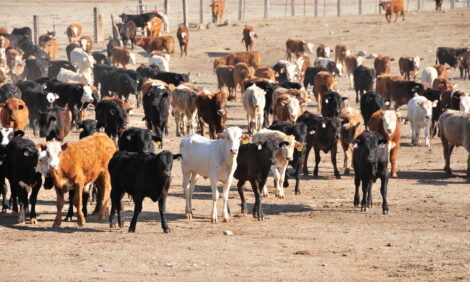



Cattle Producers Learn How to Maintain Profitability
US - Facing a triple threat of high fuel, feed and fertilizer prices, more than 1,400 cattle producers heard from experts at the 54th Texas A&M Beef Cattle Short Course on ways to maintain profitability.
The event, sponsored by the Texas AgriLife Extension Service, continues through Wednesday on the campus of Texas A&M University in College Station.
Dr. Ron Gill, AgriLife Extension beef cattle specialist from Stephenville, said during Monday's general session that cattle producers have no control over these costs, but they can control how much of these commodities is used in their operations.
"We have to really get our minds around and concentrate on the things we have control over," he said.
Gill said producers have control over the type and amount of feed that is purchased, the amount of fuel that is purchased, and must consider additional revenue streams when possible.
"How many of you knowingly or intentionally waste money?" Gill said. "Develop a systematic, planned approach to controlling cost. Don’t start cutting costs first, then start thinking about what the ramifications will be." If cows are under a body condition score of five, Gill said to consider these points:
- Look to see if you are overstocked.
- Is production potential for cattle matched to the environment?
- Is there adequate trace mineral?
"We've gotten very lax and lazy in management when we were selling $600 and $800 calves," Gill said.
That also has carried over into ranchers' driving habits, he said.
"You would be amazed at how much nonproductive driving we’ve done when there were cheap energy prices," he said.
An even tougher decision among some ranchers would be to reconsider the pickup they are driving, Gill said.
"How many of us would have bought our first diesel pickup if diesel fuel was 70 cents a gallon higher than gas at the time? How many of us love driving those diesel pickups? More than necessary."
Now is the time to also evaluate if you have the right type of cattle to fit the environment, Gill said.
"Would less cattle and less fertilizer net you more dollars?" Gill said.
"For some reason, cattle producers have it in their mind they want X amount of cows," Gill said.
Ranchers may also have to concentrate fertilizer dollars on the most productive soils.
"If it's really as bad as we think it is, then we're going to have to do something different," he said.
"We should have been more efficient when we were making $600 and $800 and putting some of that money away for times like today."
Gill said many producers are running without a financial or management plan and need to start running their cattle operation like any successful business. Even consider some things that haven’t been done in past, he said.
"Invite somebody in to look at your operation," Gill said.
"Not many want somebody telling you your faults. Get somebody to look at what you are doing and think outside the box. You may discover you don’t know enough to start cutting costs."
Dr. Jason Cleere, AgriLife Extension beef cattle specialist and conference coordinator, said short course attendees will come away more focused on the efficiencies of the operation, utilizing best management practices and keeping only the top-performing cows in herds.
"Optimize production, that's the buzzword," he said.
"The overall goal is to minimize costs without sacrificing performance ... It may mean running a few less cows. That’s being discussed throughout the forage, nutrition and genetics sessions. " For more information about the beef short course, visit http://beef.tamu.edu.
TheCattleSite News Desk


